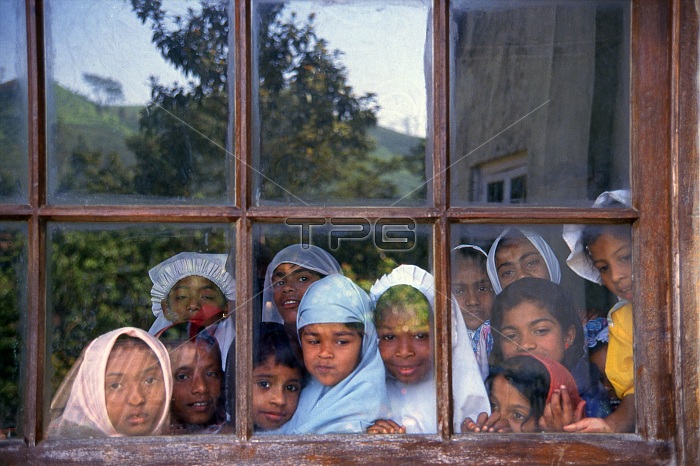
There have been Muslims in Sri Lanka for well over a thousand years. Trading dhows plied the waters between the Middle East and the island known to Arab sailors - like Sinbad - as Serendib even in pre-Islamic times. The first Muslim merchants and sailors may have landed on its shores during Muhammad's life time. By the 10th century this predominantly Arab community had grown influential enough to control the trade of the south-western ports, whilst the Sinhalese kings generally employed Muslim ministers to direct the state's commercial affairs. In 1157 the king of the neighbouring Maldive Islands was converted to Islam, and in 1238 an embassy to Egypt sent by King Bhuvaneka Bahu I was headed by Sri Lankan Muslims.
From about 1350 onwards the predominantly Arab strain in Sri Lankan Islam began to change as Tamil Muslims from neighbouring South India moved to the island in increasing numbers. By the late 15th century, when Portuguese vessels first arrived in the Indian Ocean, Sri Lanka's Muslims were truly indigenous to the island, representing a mixture of Sinhalese, Arab and Tamil blood, and speaking Tamil with Arabic overtones, sometimes known as 'Tamil-Arabic'. None of this made any difference to the newly-arrived Portuguese, for whom all Muslims were 'Moors' - the name given to their traditional enemies in Morocco and southern Spain. The name Moro - employed as a derogatory designation by the Portuguese - stuck, and is today 'worn with pride' by Sri Lankan Muslims, in much the same way as the 'Moros' of the southern Philippines.
| px | px | dpi | = | cm | x | cm | = | MB |
Details
Creative#:
TPG32696202
Source:
達志影像
Authorization Type:
RF
Release Information:
須由TPG 完整授權
Model Release:
No
Property Release:
No
Right to Privacy:
No
Same folder images:

 Loading
Loading